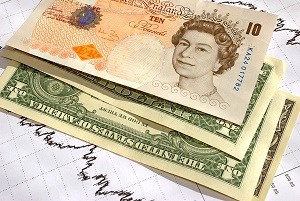Japan Interest Rate Decision Preview: Bank of Japan expected to stand pat despite Ueda hawkish hint

The Bank of Japan (BoJ) is set to announce its monetary policy decision early on Friday. The Japanese Yen (JPY) could see a wide reaction, not because of the decision itself, but because of any potential hint to the end of the ultra-loose monetary policy that has been in place since early 2016. After cutting rates to -0.1% in January 2016, the central bank announced the Yield Curve Control (YCC) in September, initially aimed to maintain the 10-year government bond yield at around 0%.
Bank of Japan Interest Rate Decision: What to know in markets on Friday, September 22
USD/JPY trades near a fresh 2023 high as the US Dollar got a boost from the latest Federal Reserve (Fed) hawkish pause. As widely anticipated, the central bank left rates unchanged in the September meeting but left the door open for another rate hike and hinted that borrowing costs could remain higher for longer. Fed projections imply one more 25 basis points (bps) rate hike this year and 50 bps of rate cuts in 2024, half the cuts previously anticipated for next year.
The US Dollar is supported by generalized optimism ahead of the BoJ announcement despite the 2-year Treasury note yield peaking at a multi-year high of 5.202% in the Fed’s aftermath, its highest since 2006. It later eased to currently stand at 5.14%. The 10-year Treasury note offers 4.94%, ending the day unchanged.
Global inflation has been generally hotter-than-anticipated in August, although the United Kingdom Consumer Price Index (CPI) rose 0.3% MoM against expectations of a 0.7% advance, while the annual reading came in at 6.7%, easing from the previous 6.8% and below the 7.1% anticipated.
The Bank of England (BoE) somehow surprised market players on Thursday as the central bank decided to leave the benchmark rate unchanged at 5.25% after fourteen hikes in a row. Financial markets somehow anticipated the decision amid cooling inflation data. Bets on additional rate hikes decreased, with one more 25 bps hike in the docket, yet the odds for a rate hike in November, however, slid from 81% before the announcement to 64% afterwards.
Wall Street closed in the red as the dismal mood triggered by the Fed and exacerbated by the BoE continued throughout Thursday.
When will the BoJ announce its interest rate decision, and how could it affect USD/JPY?
The Bank of Japan is widely anticipated to maintain rates unchanged at -0.1% once again in their September meeting. No changes to the YCC are expected either, as the BoJ is well-known for being a slow machine.
As inflation in Japan has been exceeding the BoJ’s 2% target for over a year, policymakers have been under increased pressure to change course and tighten monetary policy.
On a negative note, wage growth remains subdued, and the central bank has remarked that higher wages are a prerequisite for moving away from monetary stimulus. Average cash earnings in Japan rose by 1.3% YoY in July, slowing from 2.3% in June, although up for the nineteenth consecutive month.
As inflation rose, the central bank introduced changes to the yield curve control, allowing the 10-year yield on the Japanese Government Bond (JGB) to move in a wider band. Bottom line, the central bank has decided to intervene only when the 10-year JGB yield moves past 1.0%.
What puzzles investors and may introduce noise to the announcement is Governor Kazuo Ueda's latest comments. In an interview with the Yomiuri Shimbun, Ueda said the monetary policy tweak in July was “a mechanism to change the balance between the effects and side effects” of monetary easing measures. But he also added that the focus will shift to a “quiet exit” from the ultra-loose policy to avoid any significant impact.
However, financial markets head into the event with little hope of a relevant change in the forward guidance. “It seems that the Japanese central bankers want a stronger Yen, but without this being based on the expectation of a less expansionary monetary policy,” economists at Commerzbank said in a research note.
Ueda’s words raised some alarms. Financial markets began speculating on a potential shift, although not for this year. The Nikkei reported, “A January decision to end negative interest rates appears to be a more realistic scenario, with practical factors delaying implementation to February. The BoJ is set to update its economic and price outlook for fiscal 2023 to fiscal 2025 at that time, giving it material to help explain the basis for the policy change.”
If the Bank of Japan introduces a hawkish shift, USD/JPY could plunge. The fall could be substantial considering the pair trades near this year’s high at 148.45, having appreciated sharply after bottoming at 127.21 in January.
Valeria Bednarik, Chief Analyst at FXStreet, said: “There are no technical signs suggesting the USD/JPY rally is over. On the contrary, the pair could keep running towards the 2022 high at 151.93 in the upcoming weeks, particularly if the market sentiment remains depressed, boosting demand for the American currency.
From a technical point of view, the pair is bullish in its daily chart, with the 20-day Simple Moving Average (SMA) leading the way north, as per advancing above also bullish longer moving averages. The 20-day SMA is currently located at around 146.90, a potential bearish target should the BoJ surprise with a hawkish message. Below such area, the slump could continue towards 146.05.”
Bednarik added: “Keep in mind the initial reaction may not lead to a long-lasting trend, particularly if it results against the current bullish trend. Also, government bond yields reaction could provide clues on what to expect after the dust settles.”
Related news
USD/JPY: Upside momentum gathers extra pace – UOB
USD/JPY declines below 148.00 despite US strength, BoJ decision eyed
USD/JPY Price Analysis: Holds steady above 148.00, bulls have the hand near YTD peak
Bank of Japan FAQs
What is the Bank of Japan?
The Bank of Japan (BoJ) is the Japanese central bank, which sets monetary policy in the country. Its mandate is to issue banknotes and carry out currency and monetary control to ensure price stability, which means an inflation target of around 2%.
The Bank of Japan has embarked in an ultra-loose monetary policy since 2013 in order to stimulate the economy and fuel inflation amid a low-inflationary environment. The bank’s policy is based on Quantitative and Qualitative Easing (QQE), or printing notes to buy assets such as government or corporate bonds to provide liquidity. In 2016, the bank doubled down on its strategy and further loosened policy by first introducing negative interest rates and then directly controlling the yield of its 10-year government bonds. The Bank’s massive stimulus has caused the Yen to depreciate against its main currency peers. This process has exacerbated more recently due to an increasing policy divergence between the Bank of Japan and other main central banks, which have opted to increase interest rates sharply to fight decades-high levels of inflation. The BoJ’s policy of holding down rates has led to a widening differential with other currencies, dragging down the value of the Yen. A weaker Yen and the spike in global energy prices have led to an increase in Japanese inflation, which has exceeded the BoJ’s 2% target. Still, the Bank judges that the sustainable and stable achievement of the 2% target has not yet come in sight, so any sudden change in the current policy looks unlikely.What has been the Bank of Japan’s policy?
How do Bank of Japan’s decisions influence the Japanese Yen?
Is the Bank of Japan’s ultra-loose policy likely to change soon?
* The content presented above, whether from a third party or not, is considered as general advice only. This article should not be construed as containing investment advice, investment recommendations, an offer of or solicitation for any transactions in financial instruments.

